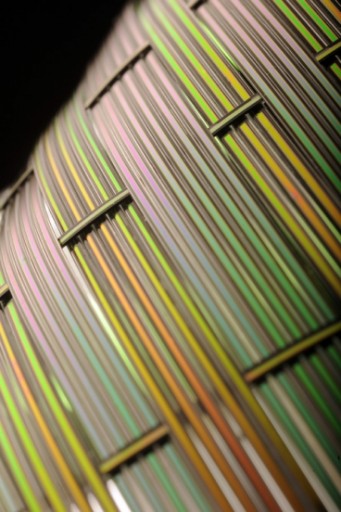Fibers that can hear and sing
July 13, 2010

Acoustic fibers with flat surfaces, like those shown here, could prove particularly useful in acoustic imaging devices. (Research Laboratory of Electronics at MIT/Greg Hren)
Fibers that can detect and produce sound have been developed by scientists at MIT’s Research Lab of Electronics.
How it works
The heart of the new acoustic fibers is a plastic commonly used in microphones. By playing with the plastic’s fluorine content, the researchers were able to ensure that its molecules remain lopsided — with fluorine atoms lined up on one side and hydrogen atoms on the other — even during heating and drawing. The asymmetry of the molecules is what makes the plastic “piezoelectric,” meaning that it changes shape when an electric field is applied to it.
In a conventional piezoelectric microphone, the electric field is generated by metal electrodes. But in a fiber microphone, the drawing process would cause metal electrodes to lose their shape. So the researchers instead used a conducting plastic that contains graphite, the material found in pencil lead. When heated, the conducting plastic maintains a higher viscosity — it yields a thicker fluid — than a metal would.
The same mechanism that allows piezoelectric devices to translate electricity into motion can work in reverse, generating electricity.

Differently shaped fibers create different sound patterns (Research Laboratory of Electronics at MIT/Greg Hren)
Applications
More info: MIT news